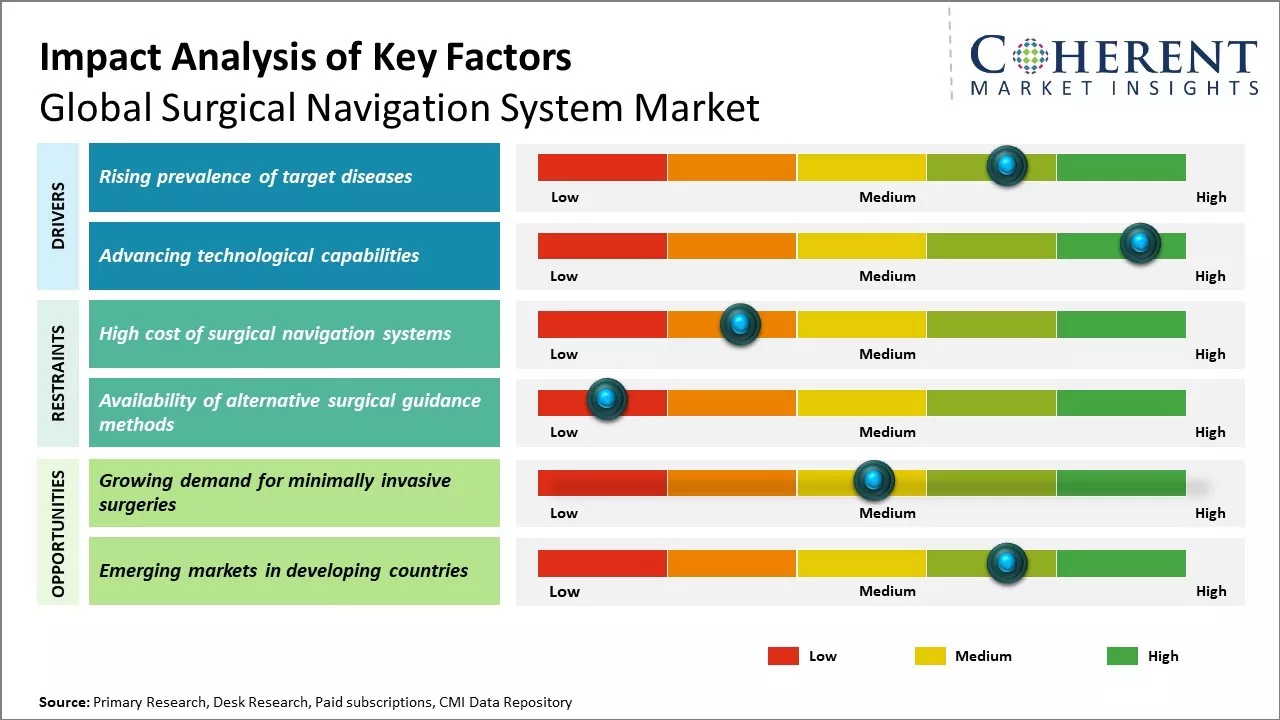Global surgical navigation system market is estimated to be valued at USD 8.33 Bn in 2025 and is expected to reach USD 13.21 Bn by 2032, exhibiting a compound annual growth rate (CAGR) of 6.8% from 2025 to 2032.

To learn more about this report, Request sample copy
Global surgical navigation system market growth is driven by increasing number of surgical procedures worldwide. Rising prevalence of chronic diseases, increasing technological advancements in navigation systems, growing popularity of minimally invasive surgeries have boosted demand of surgical navigation system across various medical sectors including orthopedics, neurosurgery, ENT surgery among others. Moreover, increasing digitization in healthcare industry, availability of mobile and wearable surgical navigation devices and growing medical tourism in emerging nations can also drive the surgical navigation system market growth globally during forecast period.
Rising prevalence of target diseases
Growing geriatric population worldwide can lead to increase in target diseases such as orthopedic conditions like osteoarthritis, spinal disorders and trauma injuries. Surgical navigation systems help surgeons to effectively perform complex reconstruction procedures for these conditions with precision and accuracy. For instance, degenerative osteoarthritis in the knee is one of the leading causes for total knee replacement procedures globally. As per estimates, over 800,000 knee replacement surgeries are performed in the U.S. annually and the number is growing substantially year-on-year. Degenerative disc disease is a very common spinal disorder affecting people above the age of 50 years. Surgical navigation comes handy for spinal fusion surgeries carried out for such disorders. As people live longer due to improvements in lifestyle and medical care, age-related musculoskeletal conditions requiring surgical intervention will boost demand for surgical navigation systems in the near future.
Joining thousands of companies around the world committed to making the Excellent Business Solutions.
View All Our Clients